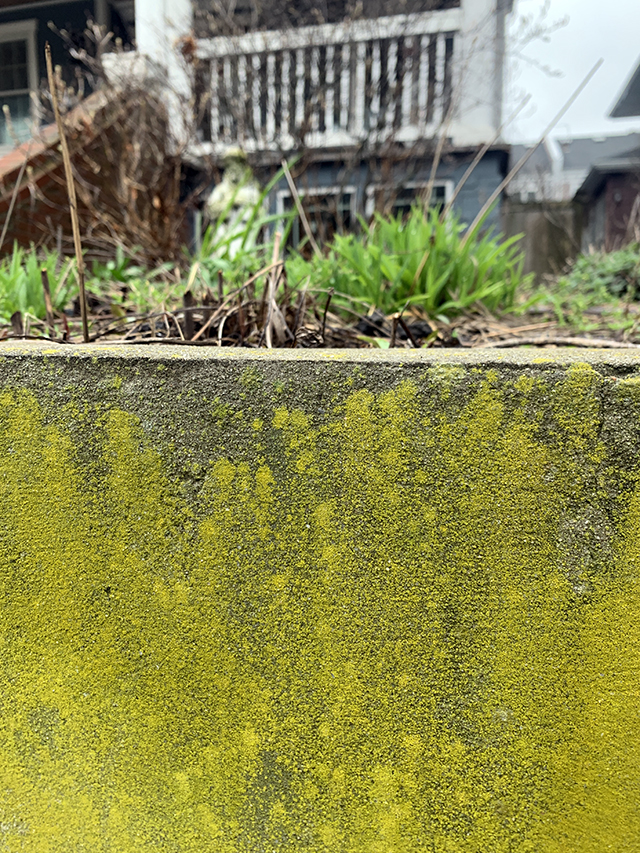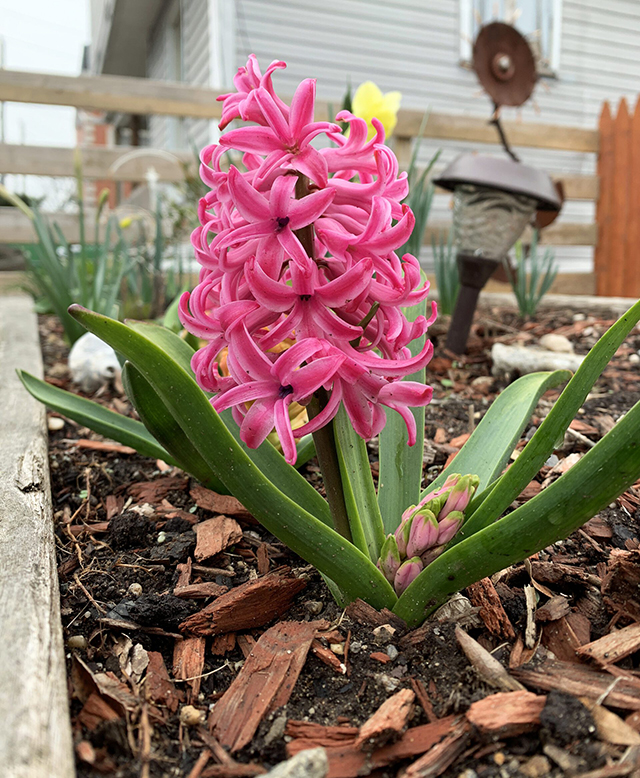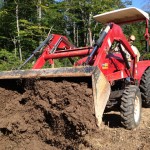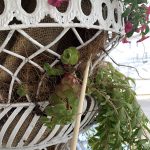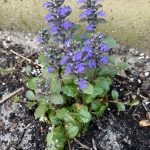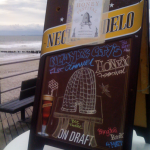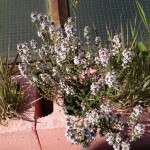Noticing Nature’s Comeback
April is staying true to its word, showering our land with the right amount of skywater to encourage vibrant greens and the early bloom of summer color. This weekend, the Beach 91st Street Community Garden held its season kick-off meeting, and I finally had the chance to touch the earth. Free compost from the Queens Botanical Garden (Queens Rep! Thank you!) was the afternoon task. I shoveled out the top three inches of soil from my garden plot and replaced it with rich compost. The scent of pure earth!
I was amazed by how deeply last season’s basil roots had grown; extracting them turned into an unplanned mini-workout. My chives have already started to emerge! In a neighboring plot, The wild cabbage also decided it was time to arrive. The yellow summer flowers of this edible green are fantastic for bees.
My “English Castle Wall”, green algae, a welcomed charming addition.
And the big yellow flag of spring is blowing in the wind! Forsythia is on the cusp of full bloom. I was chatting with garden member Josh—who works for the Parks Department (lucky us!)—and he explained the art of pruning this shrub. We leaned in close at the base, and he explained that the old growth should be cut back significantly, so the fresh new shoots can thrive. I could clearly see the difference, and we’ve planned a proper pruning tutorial with our garden group in early summer, once the yellow blooms have finished their dazzling show.
Near the garden entrance, hyacinths have announced the arrival of spring with their invigorating scent. These are bulbs, resurfacing every spring in shades of pink, purple, and even blue. You’ll find them everywhere—from CVS and bodegas to the garden centers. They’re often gifted for Easter. If you receive one, don’t throw it out after the flower passes. Instead, save the bulbs and replant them in the ground for next spring.
And to come back to the wonderful rain showers of April —they’ve brought on a bloom of algae. Most folks see this as a pest for power washing but I know it’s wonderful and beautiful. It grows on brick and cement, and I’m lucky to have it thriving on my garden’s retaining wall.
What’s fascinating is that it’s not a plant—it doesn’t have roots. It’s an organism! Every time I see it, I’m transported to an old English castle, with mossy stone walls that shimmer in the rain, and moody gray skies that go just right with the patches of green climbing around.
Here’s to the spring season of growth and color, both in the garden and beyond.
